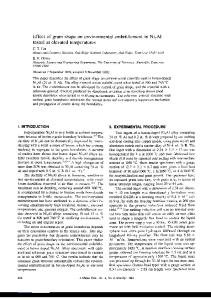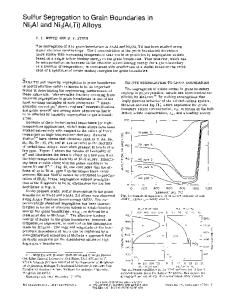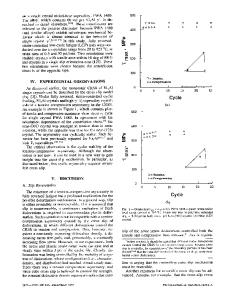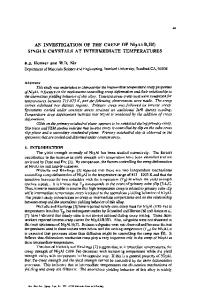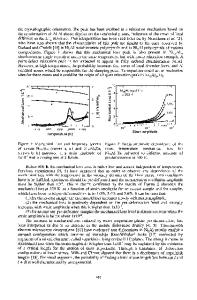Slip Systems in Ni 3 (Al, Ti) At Temperatures Above the Peak in Flow Stress
- PDF / 2,298,474 Bytes
- 6 Pages / 420.48 x 639 pts Page_size
- 20 Downloads / 925 Views
SLIP SYSTEMS IN Ni3 (AI,Ti) AT TPERATRS ABOVE THE PEAK IN FLOW S11TESS Y.Q. SUN AND P.M. HAZZLEDINE Department of Metallurgy and Science of Materials, University of Oxford ABSTRACT Dislocations in single crystals of Ni3 (AI,Ti) deformed at temperatures above the peak in flow stress have been studied by the TEM "weak-beam" technique. dislocations on the primary cube plane are mostly of edge character, and they have been observed to transform into "super" LomerCottrell locks. dislocations, by contrast, are principally of 45 character. They are believed also to become immobilized by dissociation on (1111 planes. Properties of both dislocations on cube planes are discussed and are related to the deformation behaviour of Li2 ordered intermetallic alloys.
INTROUXxCrION In the yield strength anomaly observed in some Li 2 ordered intermetallic compounds a transition of slip system takes place at the temperature where the yield stress reaches a maximum (for a review see [1]). Slip line observations indicate that below the peak temperature the crystal deforms by dislocations gliding on the primary octahedral plane (111 ) and above the peak on the primary cube plane (001). Extensive work, including transmission electron microscopy (TE4) observations and computer simulations, has been done on the behaviour and structure of dislocations gliding on {111 } planes that leads to the anomalous increase of the yield strength. Little is known, however, about the properties of dislocations on {001 1 planes in the regime above the peak temperature where the yield strength starts to decrease. This paper describes TE24 "'weak-beam" observations of dislocations in Ni 3 (Al,Ti) deformed at temperatures above the yield strength peak. EDPERIMENTAL A single crystal of nominal composition 73Ni, 19.5Al and 7.5Ti was used in the experiment. Rectangular specimens oriented near the center of the 1 unit triangle were deformed in compression at a strain rate of 8x1 0-5 secat various temperatures in air. Slip lines could be seen on prepolished
faces. The maximum of the yield stress occurred around 600 C, and at and above the peak temperature slip occurred on the primary cube plane (001). Thin foils parallel to the primary cube slip plane (001) were prepared following standard procedures and were examined in a transmission electron microscope operated at 120 KV. RESULTS AND DISCUSSION Figure 1 is a weak-beam image of dislocations in a specimen deformed at 750 C, a low magnification picture showing the general dislocation microstructure. It is observed that dislocations are mostly of edge character, long and straight, whereas screw dislocations are generally short and curved. This dislocation distribution implies that at this temperature on the (001) plane screw dislocations are mobile and that the motion of edge dislocations is difficult. Figure 2a,b are weak-beam images of edge dislocations taken with opposite reflections, where it is seen that the image of a pure edge dislocation consists of three or more peaks (bright lines) and that these lines c
Data Loading...


